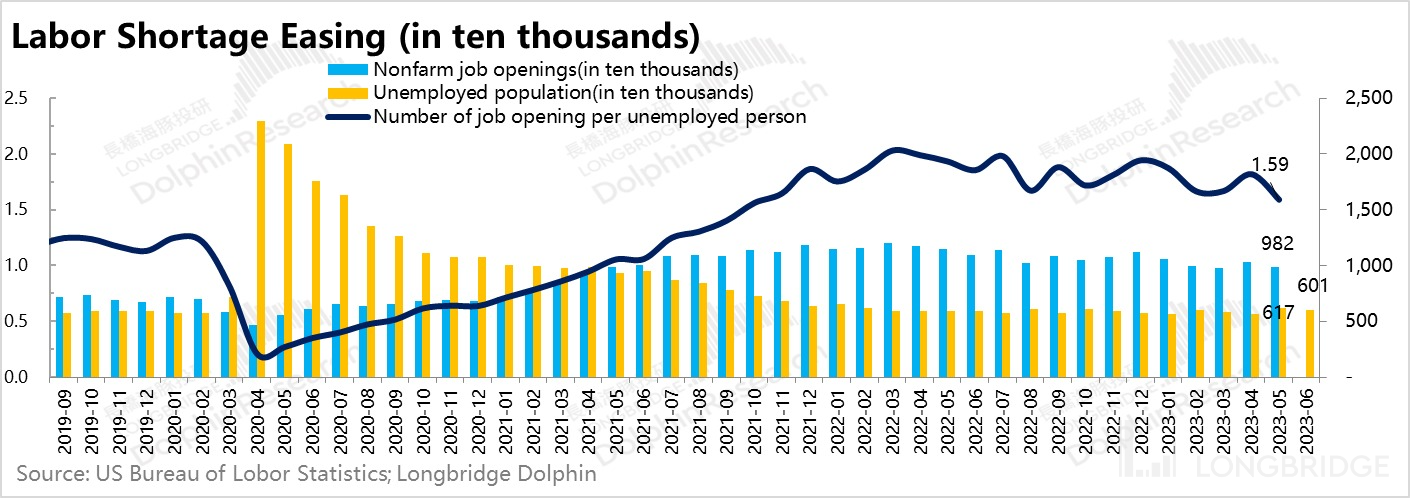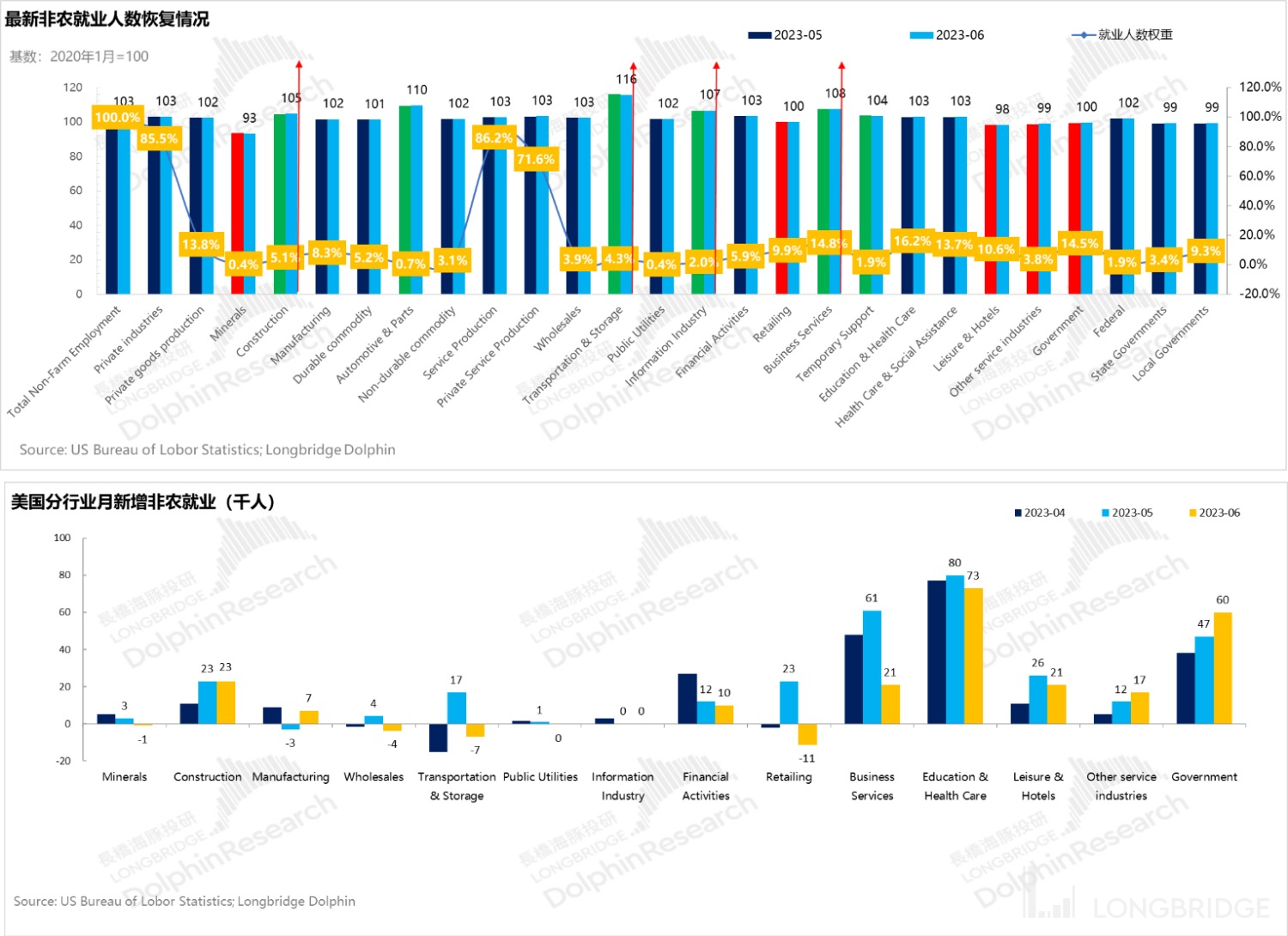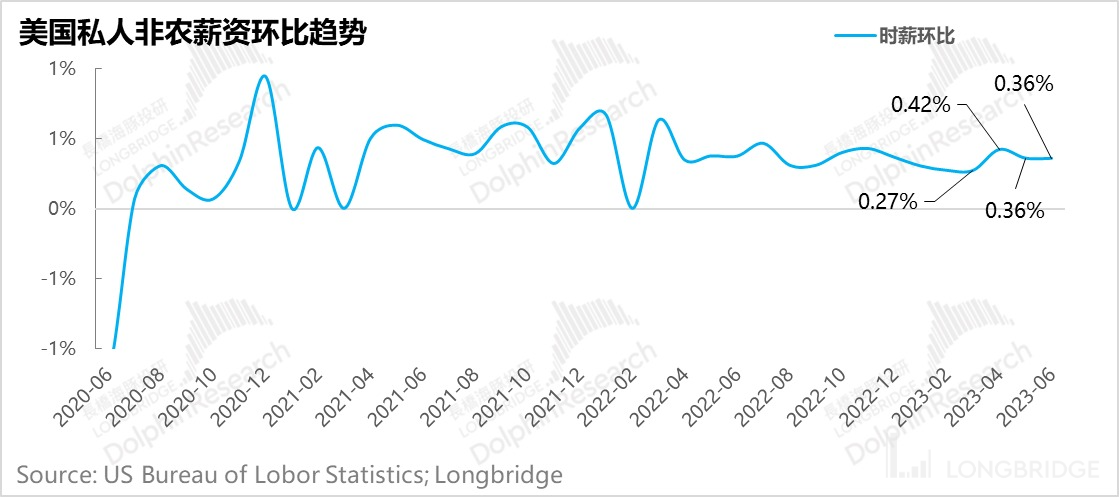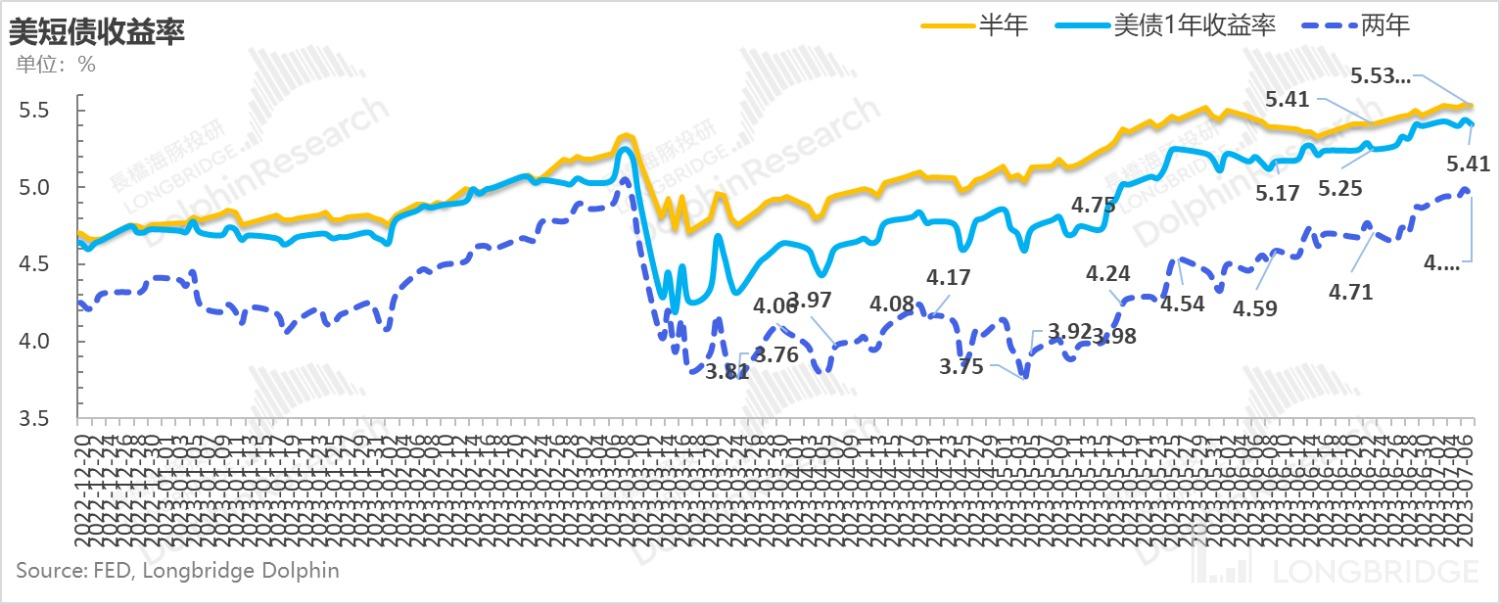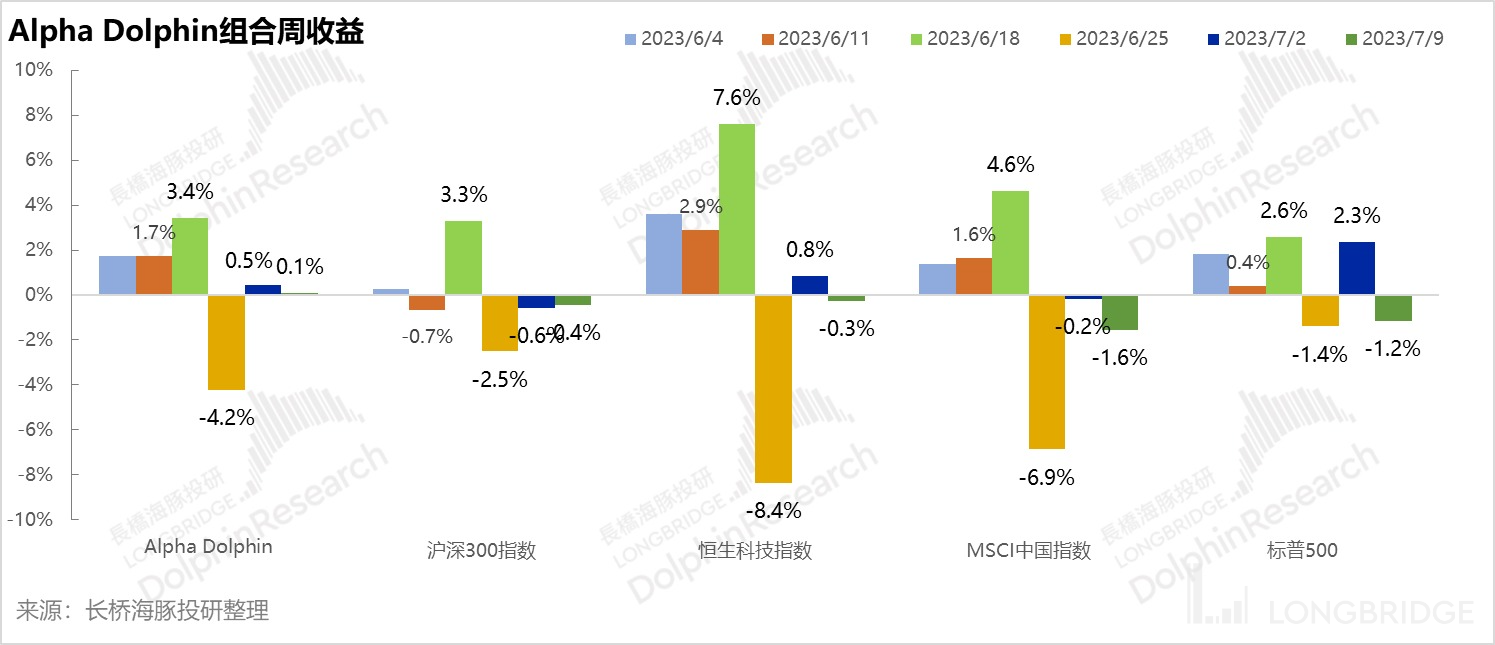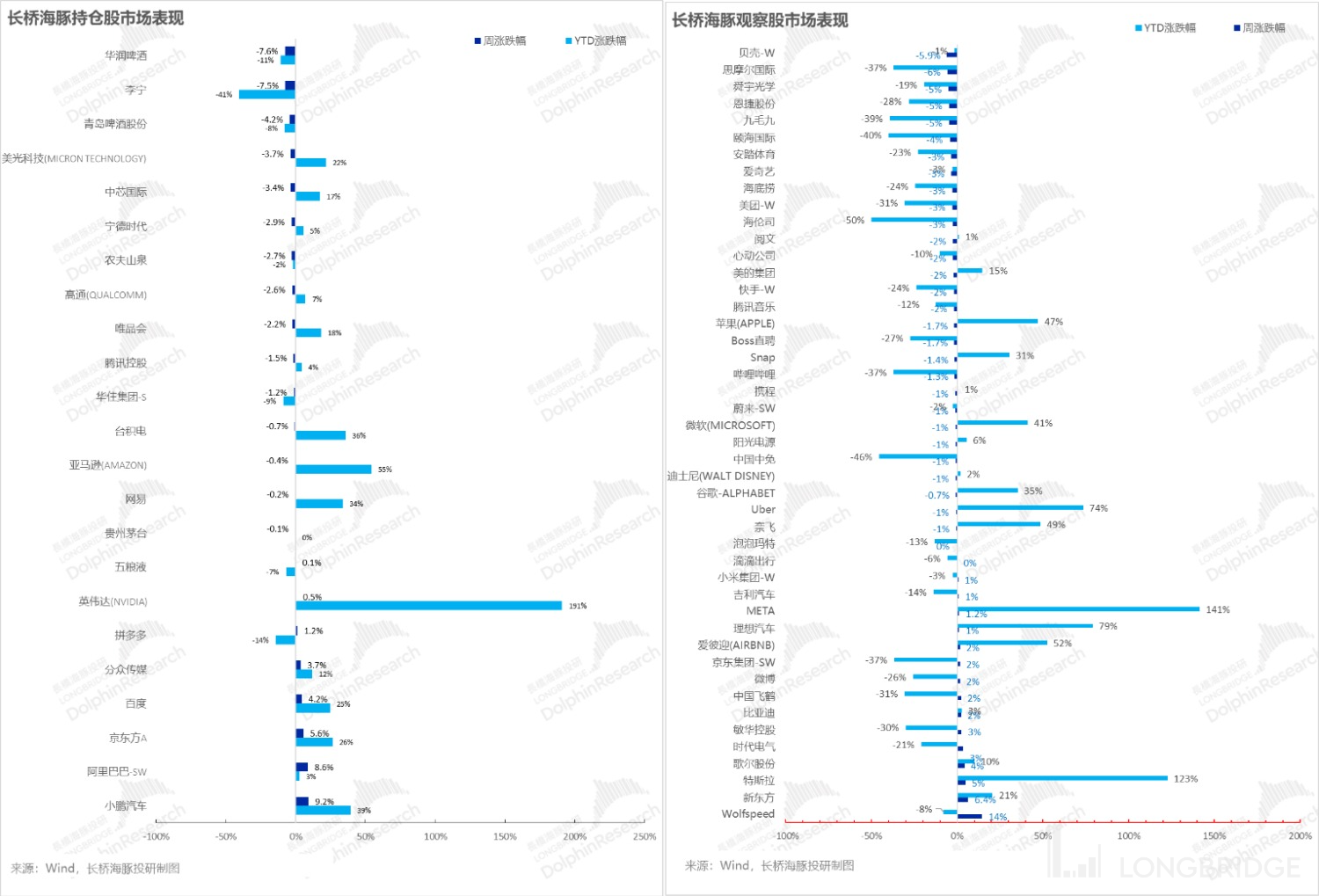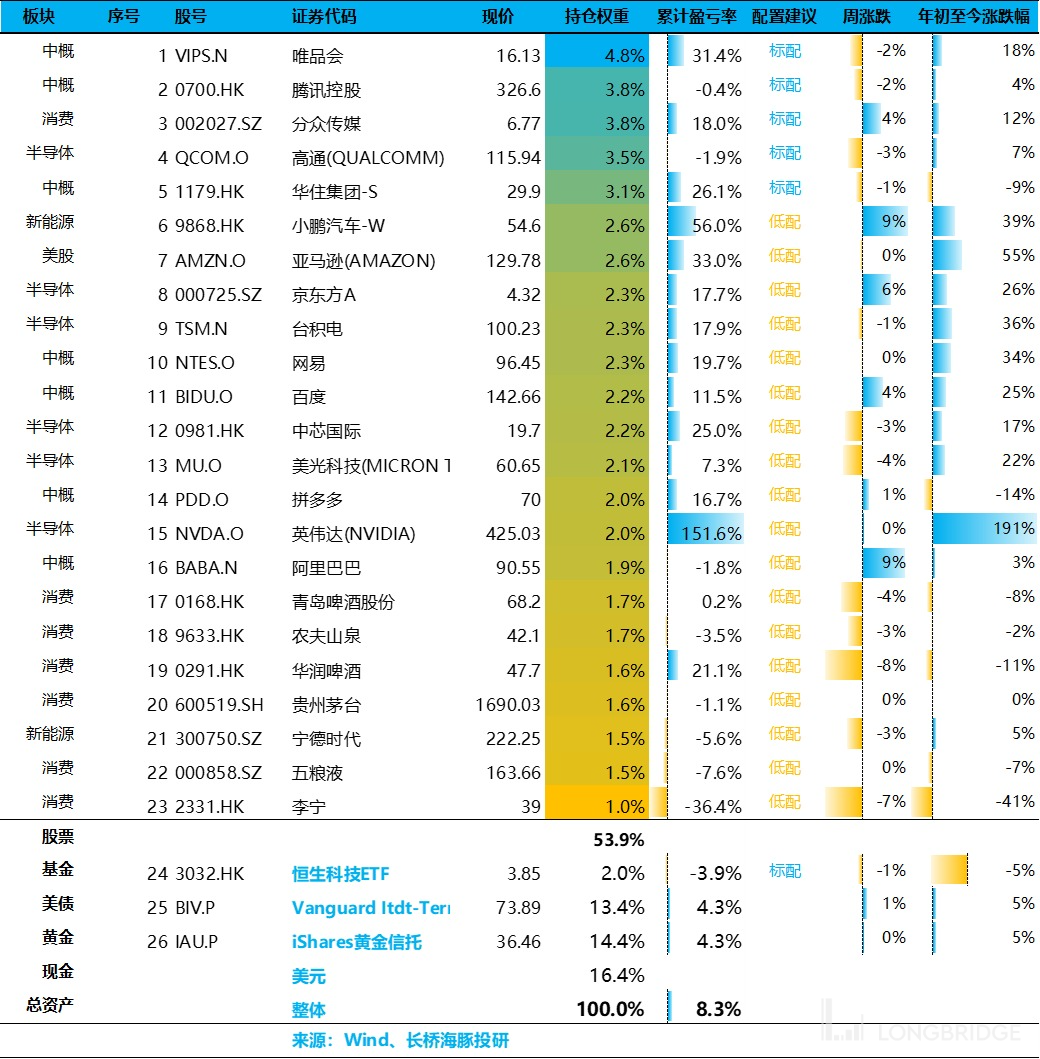Will the US interest rate hike exacerbate "stagflation"?
Hello everyone, here is the summary of this week's core information on Dolphin's combination strategy:
-
Compared to the perfect start in May, there were some issues with the newly revealed June: the cooling of employment while wages remain unchanged, and the significant expansion of the service industry PMI, which vaguely indicates the possibility of stagflation. This is not good news for the Fed's task of reducing inflation.
-
This week, there will also be the release of heavyweight CPI data. Considering the continuous decline in oil prices and the deflationary trend in food prices, the pressure on June's Headline CPI seems to be relatively low, which may be somewhat beneficial for the US stock market this week.
However, with the US stock market already pricing in the improvement in the economy while the shadow of wage inflation persists, the continued rate hikes and high interest rates may mean that there will be significant pressure for the US stock market to continue rising.
- Portfolio returns: Dolphin's virtual portfolio has reduced its positions, taking into account the fully priced-in nature of US tech assets that Dolphin focuses on, and the lack of significant upward momentum in Chinese stocks in the short term. Therefore, Dolphin has locked in floating profits in advance. The virtual portfolio of Dolphin maintained positive returns in the context of the global market's general correction last week.
Here are the details:
I. Cooling Employment without Cooling Wages
Starting from last week, the new round of economic data in the United States has been officially released, with the two most important data points - employment and hourly wage data - "fighting" each other:
1) Unexpected Cooling in Employment
Currently, cash flow-driven GDP growth, and the income growth brought about by employment, are the core driving forces of economic growth. The marginal changes in new employment and hourly wages have become particularly important.
However, before discussing employment in June, let's first look at where the tightness of labor supply was in May: the number of non-farm job vacancies in May implies that although employment data was explosive in May, it was actually a rapid filling of previously backlogged positions by companies, and the net demand for new positions by companies in the same month was reduced.
In this way, with companies reducing their own demand while rapidly filling backlogged vacancies, the tightness of labor supply in the United States in May has eased to some extent: one unemployed person corresponds to a gap of 1.59 positions, which is significantly lower than the 1.82 in April.

After the easing of labor market supply contradictions, the latest non-farm employment in June was less than 210,000, significantly lower than the monthly average so far this year.

Currently, in the private goods production category, only the employment demand in the construction industry remains relatively strong, mainly due to the bottoming out and rebound of the residential construction activity in the housing market, as well as the exceptionally strong construction activity related to the reshoring of manufacturing.
In the service production sector, which is the main force in absorbing employment, the number of employed people itself is large. However, compared to the significant overemployment in warehousing and transportation, IT industry, and business services before the pandemic, the employment in June in these sectors has also turned noticeably colder, especially the temporary employment of the blue-collar army in the business services sector has directly turned into net layoffs in June. In the entire service sector, the sustained and rigid demand for employment mainly lies in the fields of healthcare and social assistance. It seems that the continuous increase in employment is closely related to the declining labor force participation rate of the post-60s generation in the United States. The early retirement of this generation is driven by the increasing demand for healthcare services and social assistance.

- The wages remain strong
Although the performance of new job creation this month is mediocre, the seasonally adjusted hourly wage has increased by 0.36% compared to the previous month (equivalent to a year-on-year increase of 4.4%), showing no signs of cooling down.

Corresponding to the high wage growth, the PMI of the service industry, which is sensitive to labor costs, has once again expanded significantly. Almost all key sub-indices have shown marginal improvement: business activities are close to overheating, reaching nearly 60; new orders and employment are accelerating expansion.

However, the situation becomes a bit awkward: the tightness of employment seems to be easing, but wage growth remains sticky, and the PMI for the service industry in June implies further expansion.
In addition, the two major interest rate-sensitive industries, namely automobiles and real estate, seem to have emerged from the bottom of the cycle, increasing the risk of stagflation. Another interest rate hike within the year is almost certain. Currently, the short-term bond market has already fully priced in a 50 basis point rate hike.

Moreover, the biggest change in the bond market last week was that in addition to the rise in short-term bond yields, the anchor for asset pricing, the ten-year government bond, also quickly rose and broke the four percent mark, driven by the upward movement of long-term economic growth expectations (10-year TIPS).

Overall, with the slowdown in job growth and the rigid increase in wages in June, the underlying economic prospects indicate a service sector stagflation scenario, coupled with continuously rising interest rate expectations. This situation is clearly unfavorable for the high valuation growth sectors of the US stock market.
Starting this week with leading financial stocks, the US stock market has officially entered the earnings season. Based on the current macroeconomic data, this wave of leading US banks has brought about an increase in deposit concentration through mergers and acquisitions, while the outflow of deposits from depositors is not significant. Net interest margin remains high, and the performance in the second quarter is expected to be satisfactory. Before the heavyweight data of the US interest rate decision this week, the release of June CPI and PPI is noteworthy. With the current downward trend in oil prices and even food prices, it is expected that the pressure on headline CPI will remain low, and the short-term pressure on US stocks may also ease.
However, in terms of the long-term expectations, the subsequent interest rate hikes and the duration of high interest rates still depend on the trend of labor cost changes, that is, the resilience of wage inflation.
In addition to the housing component excluded from CPI this week, another indicator to pay attention to is the quarterly release of the Employment Cost Index (ECI) report, and currently, there is no sign of a slowdown in wage inflation.
Therefore, in the long term, it is believed that the overall logic of "strong economy, multiple technologies; new technologies, multiple technologies; and anti-recession, multiple technologies" has been priced too fully, and attention should be paid to the potential valuation squeeze risk of technology stocks caused by the rise in risk-free interest rates.

II. Portfolio Returns
In the week ending June 30th, the Alpha Dolphin virtual portfolio increased by 0.1%, outperforming major market indices: outperforming the S&P 500 Index (-1.2%), MSCI China Index (-1.6%), CSI 300 Index (-0.4%), and Hang Seng Tech Index (-0.3%).

Since the start of the portfolio testing until last weekend, the absolute return of the portfolio was 19.2%, and the excess return compared to MSCI China was 43.8%. From the perspective of net asset value, the initial virtual assets of Dolphin were 100 million US dollars, and it is currently 121 million US dollars.

III. Contribution of Individual Stocks' Profits and Losses
Last week, the market generally declined, but the Dolphin virtual portfolio resisted the decline relatively well. This was mainly due to the relatively positive fundamentals of Alibaba and Xiaopeng, which were held in the portfolio. Alibaba's low valuation was confirmed with the settlement of the Ant Group fine, and Xiaopeng's sales expectations for the G6 model improved with improved weekly sales.
In addition, due to the lack of obvious opportunities in this round of the market, the portfolio reduced its positions, locked in floating profits, and waited for more suitable price opportunities in the future.

The specific reasons for the rise and fall of the top-performing companies, as summarized by Dolphin, are as follows:

7. Distribution of Combined Assets
There were no adjustments made to the portfolio this week. The portfolio consists of 24 stocks or ETFs, with 5 of them being rated as standard and 18 of them being rated as below standard. The remaining assets include gold, US bonds, and US dollars.
As of last weekend, the asset allocation and equity asset weighting of Alpha Dolphin are as follows:


Risk Disclosure and Statement for this Article: Dolphin Disclaimer and General Disclosure
Please refer to the recent weekly reports from Dolphin for more articles:
"Decoding the Mystery of Low Savings in the United States, Is It Sustainable?"
"US Housing Market: Subprime Sin, Why Is It Resilient This Time?"
"Peeling Back the Layers: Where Did the Recession Go and Can It Return?"
"Does a Short Essay Influence the Market? Core Lies in Overcompensation After Extreme Pessimism"
"Is the US Stock Market Still Celebrating? Economic Schizophrenia, Beware of Joy Turning to Sorrow" 《Hell vs. Carnival: What are the US and Hong Kong stock markets really trading?》
《US stocks pull valuation, Hong Kong stocks kill Beta? Don't despair, the reversal is coming》
《 Put high interest rates in another bank? The chances of a soft landing have increased instead》
《 ChatGPT vs. Performance release, can giants support the US stock market?》
《 Is the plan of "US recession, China recovery" going down the drain?》
《 The direction of US recession is set, it's just a minor setback, a major setback is harmful》
《 US service consumption collapses, US stocks celebrate?》
《Fed rate cut: Just one moment before the US version of Yu'EBao strikes?》
《US stocks are going to decline, interest rates are going to be cut? Anyway, the trading has already taken the lead》 app_id=longbridge&channel=t4444430&invite-code=032064)
《Silicon Valley Bank Run Crisis: Is the US Recession Running to the Scene?》
《US Stocks Give Up Trading and Rush Ahead, the World Can Finally Breathe》
《Inflation Rising: Is It a Confirmation? Adversity Brings Opportunities》
《Putting Inflation Aside, the Signals in Alibaba and Baidu Are More Important》
《Both Hong Kong and US Stocks Are Weak, Is the Wolf Coming Again?》
《The Puppet of High-Frequency Macroeconomics, the Stock Market Is a Puppet Market》
《A Single Candlestick Changes Beliefs, Is Tesla Leading the Stock Market Comeback?》
《How Far Is the "Danger" of the US Stock Market from Changing?》
《US Stocks Did Not Have a Red New Year, But the Hammer of Performance Is Close at Hand》
《Uncovering the Root Cause of the Stagnation of US Stocks》 《CPI has fallen, why is the Fed still so stubborn?》
《Is it really easy to eliminate service inflation? Beware of market overcorrection》
《The darkest hour before dawn: Is the mindset focused on darkness or dawn?》
《 US stocks "sent back" to reality, how much longer can emerging markets bounce?》
《Global valuation recovery? There are still challenges in performance verification》
《China's asset violence drives up prices, why is there a stark contrast between China and the US?》
《Amazon, Google, Microsoft: Fallen giants? The "meteor shower" in US stocks is not over yet》
《Policy shift expectations: Is the "strong dollar" GDP growth unreliable?》
《Southbound takeover vs Northbound frenzy, another test of "determination"》
《Slowing rate hikes? The American dream shattered once again》
《 Getting to know the "iron-willed" Fed again》 "A Sad Second Quarter: The 'Eagle's Cry' Rings Loudly, Collective Crossing Difficulties"
"Falling to Doubt Life, Is There Still Hope for Desperation?"
"Violent Inflation Hammered by the Fed, Domestic Consumption Opportunities Arise?"
"Global Markets Plunge Again, Labor Shortage in the United States is the Root Cause"
"The Fed Becomes the Number One Bear, Global Markets Collapse"
"The United States Shifts Left, China Shifts Right, Cost-effectiveness of US Assets Returns"
"Layoffs are Too Slow, More Troubles Ahead for the United States"
"US Stocks Celebrate 'Funeral': Recession is Good, Strongest Rate Hike is Bearish Exhausted"
"Entering the Second Half of Rate Hikes, 'Earnings Thunder' Begins"
"The Epidemic Strikes Back, US Recession, and Changing Tides of Capital" 《China's Current Assets: "No News is Good News" in US Stocks》
《Is Growth Already a Carnival, or is the US Definitely in Decline?》
《Is the US in Decline or Stagnation in 2023?》
《US Oil Inflation, Can China's New Energy Vehicles Grow Strong?》
《As the Fed Speeds Up Interest Rate Hikes, Opportunities in Chinese Assets Arise》
《US Stock Inflation is Exploding Again, How Far Can the Rebound Go?》
《The Most Down-to-Earth, Dolphin Investment Portfolio is Launched》




